Ford Mustang Mach-E vs VW ID.3 – Differences & prices compared
Compare performance, boot capacity, efficiency and price at a glance.
Find out which car is the better choice for you – Ford Mustang Mach-E or VW ID.3?
Costs and Efficiency:
When it comes to price and running costs, the biggest differences usually appear. This is often where you see which car fits your budget better in the long run.
VW ID.3 has a significantly advantage in terms of price – it starts at 28600 £, while the Ford Mustang Mach-E costs 48400 £. That’s a price difference of around 19860 £.
In terms of energy consumption, the advantage goes to the VW ID.3: with 14.50 kWh per 100 km, it’s noticeable more efficient than the Ford Mustang Mach-E with 17.70 kWh. That’s a difference of about 3.20 kWh.
As for range, the VW ID.3 performs hardly perceptible better – achieving up to 605 km, about 5 km more than the Ford Mustang Mach-E.
Engine and Performance:
Power, torque and acceleration are the classic benchmarks for car enthusiasts – and here, some clear differences start to show.
When it comes to engine power, the Ford Mustang Mach-E has a clearly perceptible edge – offering 487 HP compared to 326 HP. That’s roughly 161 HP more horsepower.
In acceleration from 0 to 100 km/h, the Ford Mustang Mach-E is clearly quicker – completing the sprint in 3.80 s, while the VW ID.3 takes 5.70 s. That’s about 1.90 s faster.
There’s no difference in top speed – both reach 200 km/h.
There’s also a difference in torque: Ford Mustang Mach-E pulls convincingly stronger with 950 Nm compared to 545 Nm. That’s about 405 Nm difference.
Space and Everyday Use:
Beyond pure performance, interior space and usability matter most in daily life. This is where you see which car is more practical and versatile.
Both vehicles offer seating for 5 people.
In curb weight, VW ID.3 is distinct lighter – 1787 kg compared to 2161 kg. The difference is around 374 kg.
In terms of boot space, the Ford Mustang Mach-E offers distinct more room – 519 L compared to 385 L. That’s a difference of about 134 L.
In maximum load capacity, the Ford Mustang Mach-E performs to a small extent better – up to 1420 L, which is about 153 L more than the VW ID.3.
When it comes to payload, VW ID.3 minimal takes the win – 473 kg compared to 450 kg. That’s a difference of about 23 kg.
Who wins the race?
The Ford Mustang Mach-E proves to be wins the duel decisively and therefore becomes our DriveDuel Champion!
Ford Mustang Mach-E is the better all-rounder in this comparison.
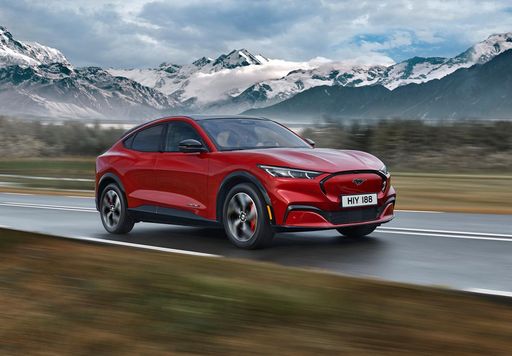
Ford Mustang Mach-E
Ford Mustang Mach-E
The Ford Mustang Mach-E marks a new chapter in the legacy of the iconic American brand, combining classic muscle car aesthetics with modern electric vehicle technology. Its sleek design captures the spirit of innovation while offering a spacious and tech-savvy interior for enhanced driving comfort. The Mach-E promises an exhilarating driving experience, packed with cutting-edge features that set a new standard for electric SUVs.
details @ mustang.fordpresskits.com
@ mustang.fordpresskits.com
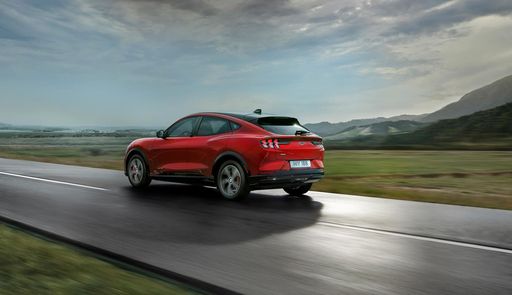 @ mustang.fordpresskits.com
@ mustang.fordpresskits.com
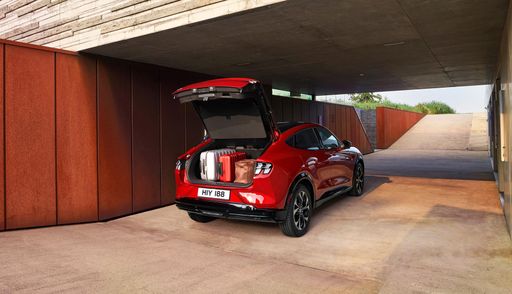 @ mustang.fordpresskits.com
@ mustang.fordpresskits.com
 @ mustang.fordpresskits.com
@ mustang.fordpresskits.com
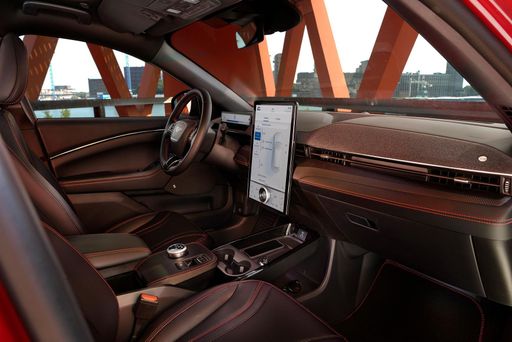 @ mustang.fordpresskits.com
@ mustang.fordpresskits.com
VW ID.3
The VW ID.3 represents Volkswagen's entry into the world of electric vehicles, offering a modern design that combines functionality with sustainability. Inside, you'll find a spacious and tech-forward interior, providing a comfortable driving experience while maintaining a focus on environmentally friendly materials. The ID.3's performance delivers a smooth and responsive feel on the road, making it a strong contender in the growing electric car market.
details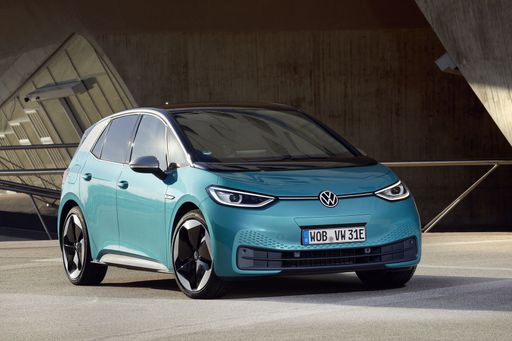 @ Volkswagen
@ Volkswagen
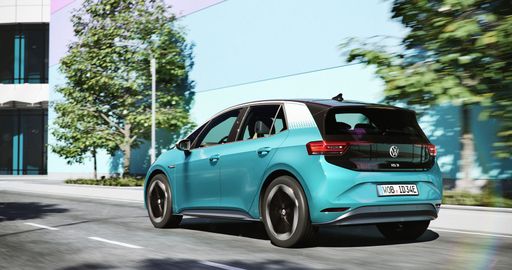 @ Volkswagen
@ Volkswagen
 @ Volkswagen
@ Volkswagen
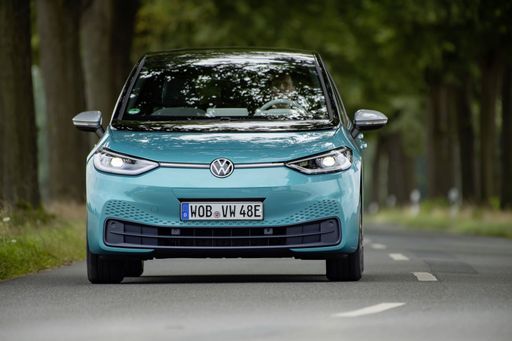 @ Volkswagen
@ Volkswagen
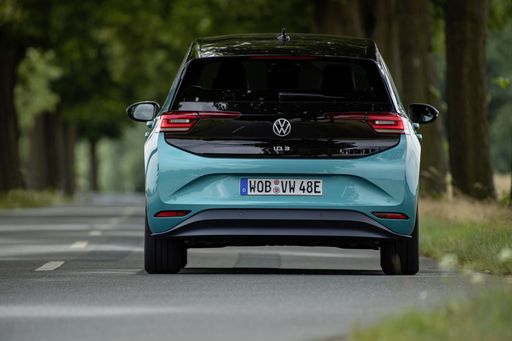 @ Volkswagen
@ Volkswagen
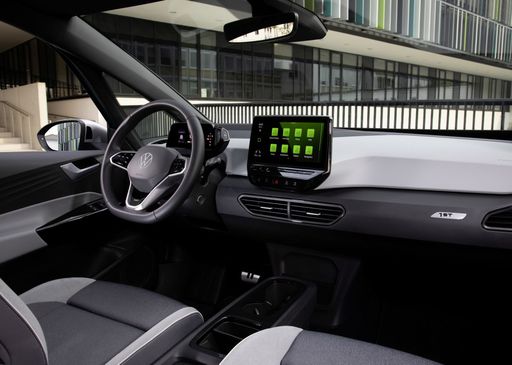 @ Volkswagen
@ Volkswagen
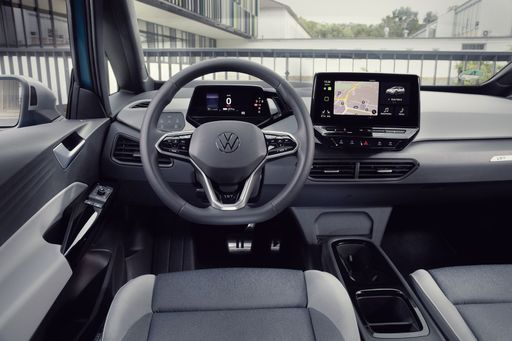 @ Volkswagen
@ Volkswagen

|

|
|
|
|
Costs and Consumption |
|
|---|---|
|
Price
48400 - 66900 £
|
Price
28600 - 49300 £
|
|
Consumption L/100km
-
|
Consumption L/100km
-
|
|
Consumption kWh/100km
17.7 - 21 kWh
|
Consumption kWh/100km
14.5 - 15.8 kWh
|
|
Electric Range
470 - 600 km
|
Electric Range
383 - 605 km
|
|
Battery Capacity
73 - 91 kWh
|
Battery Capacity
52 - 79 kWh
|
|
co2
0 g/km
|
co2
0 g/km
|
|
Fuel tank capacity
-
|
Fuel tank capacity
-
|
Dimensions and Body |
|
|---|---|
|
Body Type
SUV
|
Body Type
Hatchback
|
|
Seats
5
|
Seats
5
|
|
Doors
5
|
Doors
5
|
|
Curb weight
2161 - 2351 kg
|
Curb weight
1787 - 1993 kg
|
|
Trunk capacity
519 L
|
Trunk capacity
385 L
|
|
Length
4713 - 4743 mm
|
Length
4264 mm
|
|
Width
1881 mm
|
Width
1809 mm
|
|
Height
1613 - 1624 mm
|
Height
1564 mm
|
|
Max trunk capacity
1345 - 1420 L
|
Max trunk capacity
1267 L
|
|
Payload
368 - 450 kg
|
Payload
437 - 473 kg
|
Engine and Performance |
|
|---|---|
|
Engine Type
Electric
|
Engine Type
Electric
|
|
Transmission
Automatic
|
Transmission
Automatic
|
|
Transmission Detail
Reduction Gearbox
|
Transmission Detail
Reduction Gearbox
|
|
Drive Type
Rear-Wheel Drive, All-Wheel Drive
|
Drive Type
Rear-Wheel Drive
|
|
Power HP
268 - 487 HP
|
Power HP
170 - 326 HP
|
|
Acceleration 0-100km/h
3.8 - 6.2 s
|
Acceleration 0-100km/h
5.7 - 8.2 s
|
|
Max Speed
180 - 200 km/h
|
Max Speed
160 - 200 km/h
|
|
Torque
525 - 950 Nm
|
Torque
310 - 545 Nm
|
|
Number of Cylinders
-
|
Number of Cylinders
-
|
|
Power kW
197 - 358 kW
|
Power kW
125 - 240 kW
|
|
Engine capacity
-
|
Engine capacity
-
|
General |
|
|---|---|
|
Model Year
2025
|
Model Year
2024 - 2025
|
|
CO2 Efficiency Class
A
|
CO2 Efficiency Class
A
|
|
Brand
Ford
|
Brand
VW
|
What drive types are available for the Ford Mustang Mach-E?
The Ford Mustang Mach-E is offered with Rear-Wheel Drive or All-Wheel Drive.
The prices and data displayed are estimates based on German list prices and may vary by country. This information is not legally binding.
